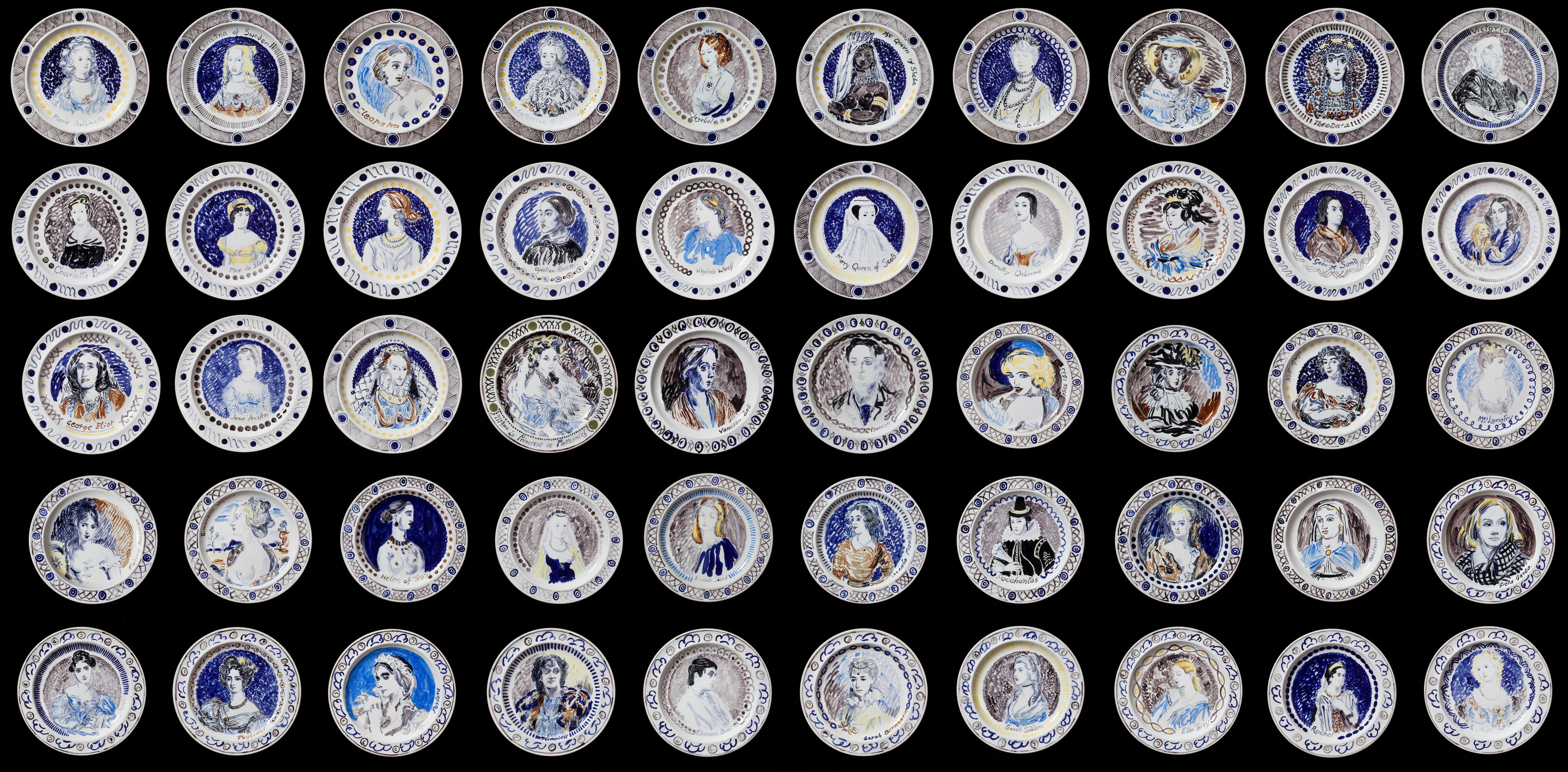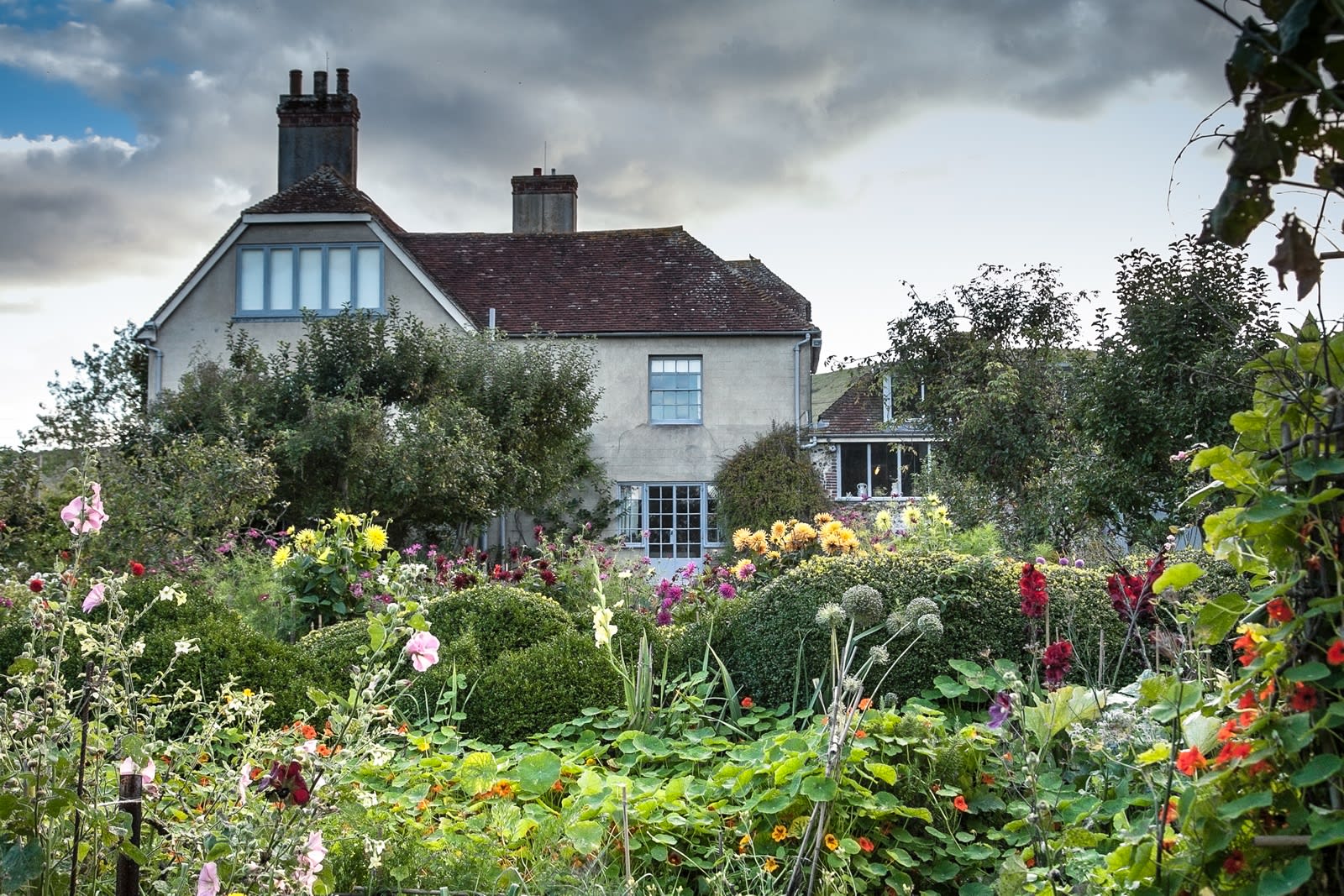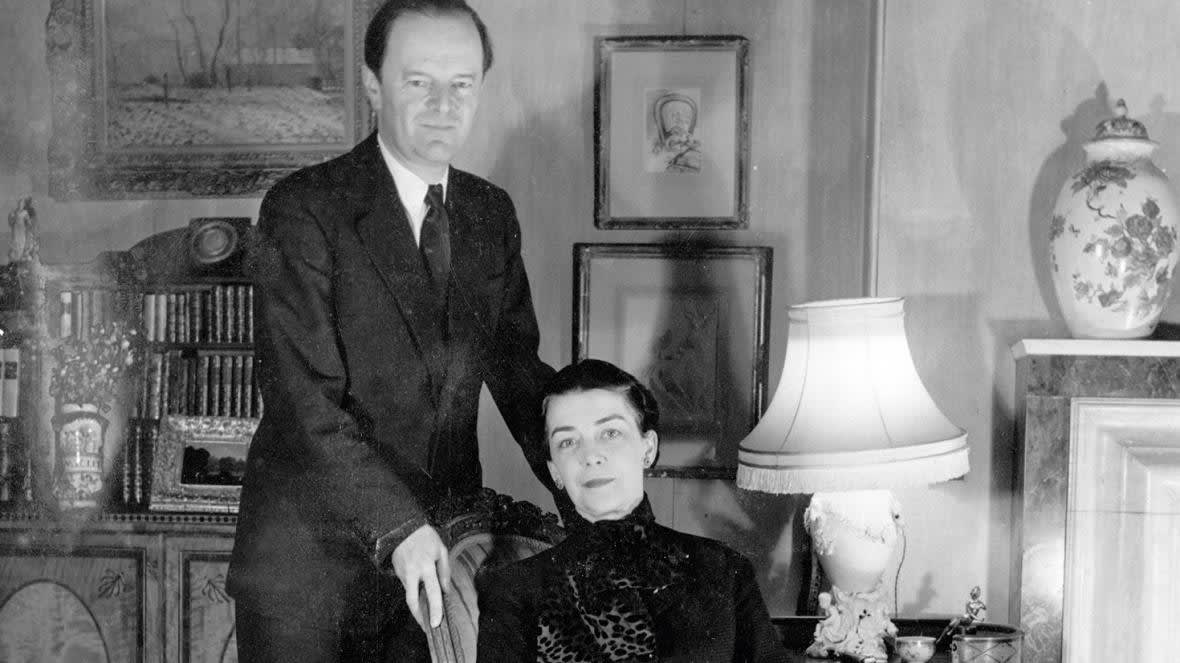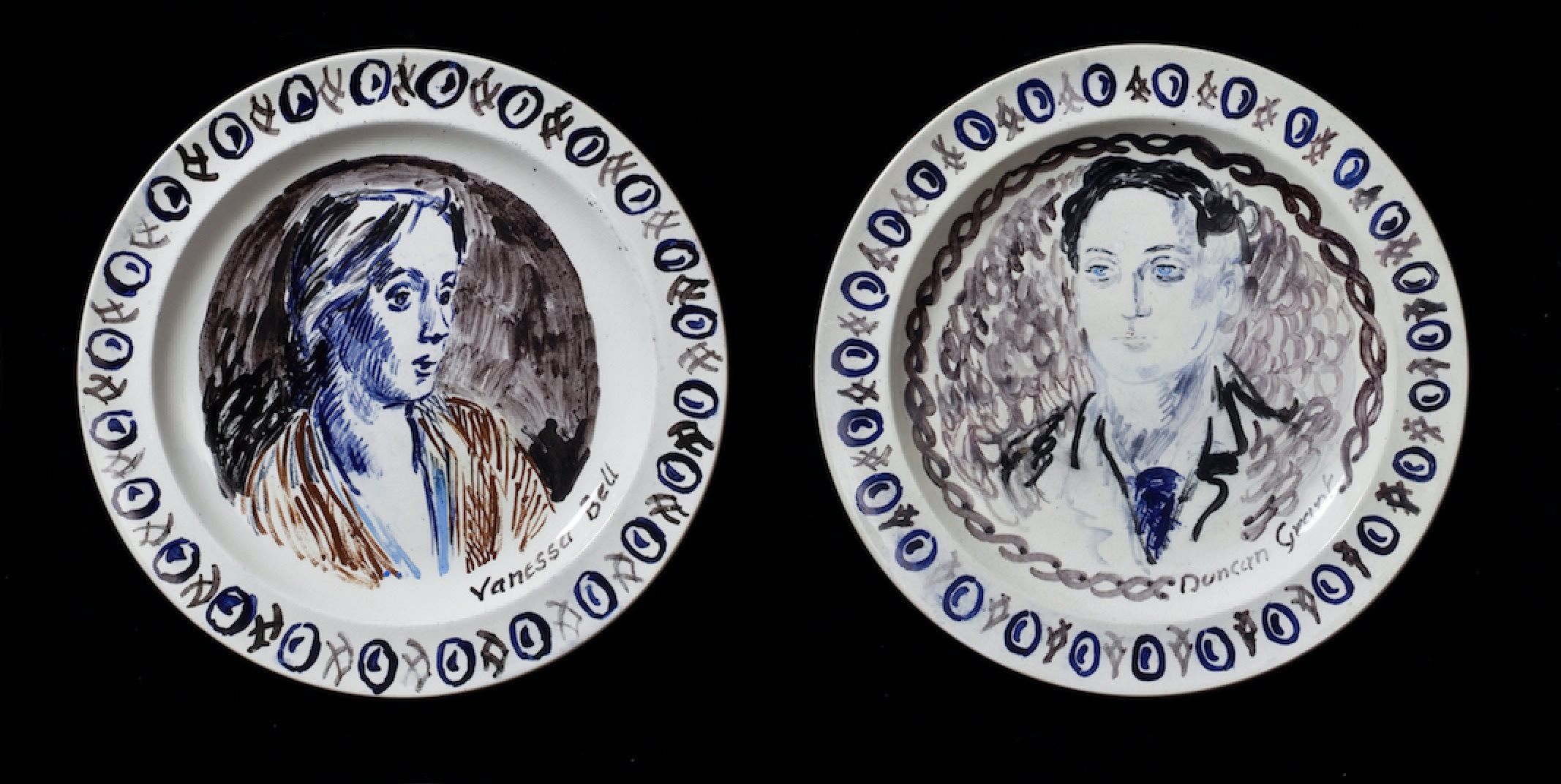For this final focus on the art of Duncan Grant and Vanessa Bell, InSight recalls the story of the Famous Women Dinner Service – a remarkable set of plates made collaboratively by Grant and Bell, saved from obscurity by Piano Nobile, and now publicly owned by the Charleston Trust.

In April this year, the Charleston Trust launched an emergency appeal for funds. The independent trust manages the farmhouse where Grant and Bell lived from 1916 until their deaths. It is the place where the Famous Women Dinner Service was painted; in the summer of 1918, Roger Fry wandered along the old coach road behind the house, paying visits and fishing for Vanessa’s affections; at the bottom of the drive, Maynard Keynes secreted a painting of apples by Cézanne in a hedgerow after returning from the Degas sale in Paris. It is a place of great historical importance. The property’s closure due to COVID-19, the cancellation of the Charleston Festival, and the absence of direct public funding mean the trust is now in need of charitable offerings if it is to open again when the pandemic abates.

Since September 2018, one of Charleston’s main attractions has been a permanent gallery space, part of which displays this unique set of plates. To begin with, Kenneth and Jane Clark wanted to impress their guests with a magnificent display of tableware. In 1932, with this goal in mind, they approached Duncan Grant and Vanessa Bell with the commission for a dinner service. Kenneth was director of the Ashmolean Museum at the time and, later in the year, their young family was augmented with the birth of twins, Colin and Colette. The project was in keeping with their growing family and Kenneth’s growing prestige. By 1934, he had become the director of the National Gallery. He is still the youngest person ever to hold that role, aged just thirty.

The idea for an all-female cast of historical figures appears to have originated not from the Clarks, however, but from Bell and Grant. Upon seeing the finished set, Kenneth was equivocal. In his autobiography, he suggested that the Famous Women service was a matter of “Bloomsbury asserting its status as a matriarchy”. The significant quantity of correspondence between Bell and Kenneth’s wife Jane suggests that Kenneth may have been kept out of the loop – a tantalising possibility which has been hinted to by the art historian Hana Leaper. The final set included forty-eight plates portraying famous women – Beauties, Dancers and Actresses, Queens, and Women of Letters – and two plates with self-portraits by Bell and Grant.

Upon completion of the set, the Clarks received it at their home in London and the plates followed them when they moved to Saltwood Castle in 1953. Jane passed away in 1976 and, in the following year, Kenneth married Nolwen de Janzé-Rice, a Frenchwoman who was herself recently widowed. Shortly before Kenneth’s death in 1983, the plates were photographed at Saltwood. They appear in a staged setting: the faces of each famous woman are spread across a table, all of them facing the camera. The nearest plate is that of ‘Miss 1933’ – the fifteen-year-old Marian Bergeron – just ahead of the self-portraits of Bell and Grant, and alongside other plates of Greta Garbo (apparently Grant's favourite actress) and Virginia Woolf.

Until recently, this photograph was one of the last known records about the whereabouts of the dinner service. For the first time, InSight can reveal the intervening provenance. Following Kenneth’s death, much of his Bloomsbury collection remained with the family at Saltwood. However, certain pieces were looked after by Nolwen, including the dinner service, and she took them to her London apartment where they remained until she died in 1989. The contents of the apartment were removed to Hamburg by her executors. After a few years, the plates were offered for sale at an obscure auction house in Hamburg, sometime in either 1999 or 2000. From there they were acquired by a private collector, from whence they returned to London, though their new owner was unaware of their significance. In time, the private collector sold his apartment along with its contents, and so the plates passed to a new owner again.
Meanwhile, the search for the plates had started to heat up. In 2014, curators John-Paul Stonard and Chris Stephens were organising an exhibition at Tate Britain about Kenneth Clark. They were able to follow the Famous Women as far as the Hamburg sale, but no further. The plates were also sought by the organisers of Bell’s well-publicised retrospective at Dulwich Picture Gallery in 2017, but again to no avail. Around the same time, however, the plates were offered to Piano Nobile, where they were eventually identified for the unique artwork that they are. In the summer of 2018, following grants from the Heritage Lottery Memorial Fund and the Art Fund along with many private donations, the plates were acquired by the Charleston Trust, returning home to be displayed in the very place where they were painted. It can only be hoped that the farmhouse, garden and gallery space, along with the Famous Women Dinner Service, will be receiving visitors again before long.


